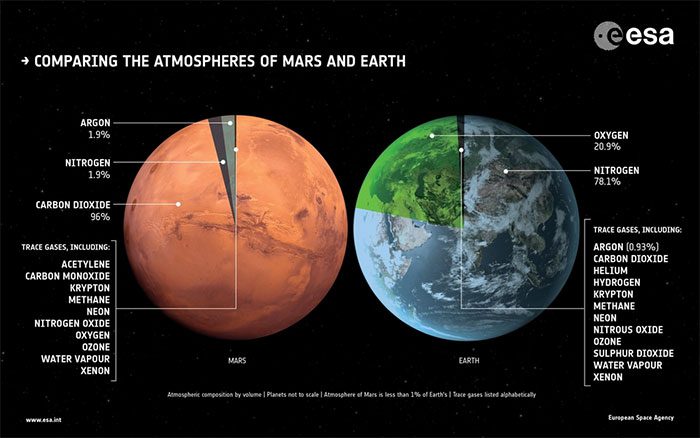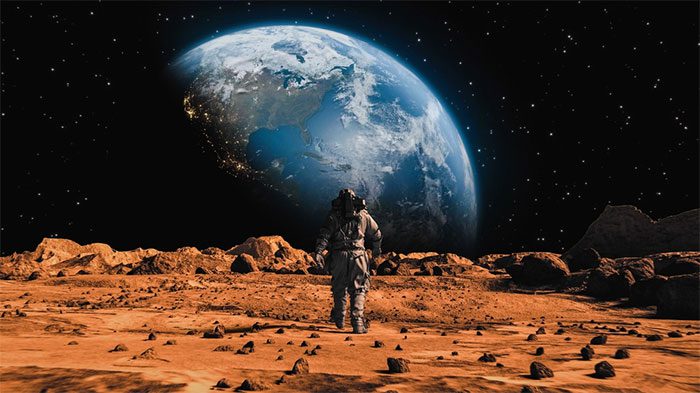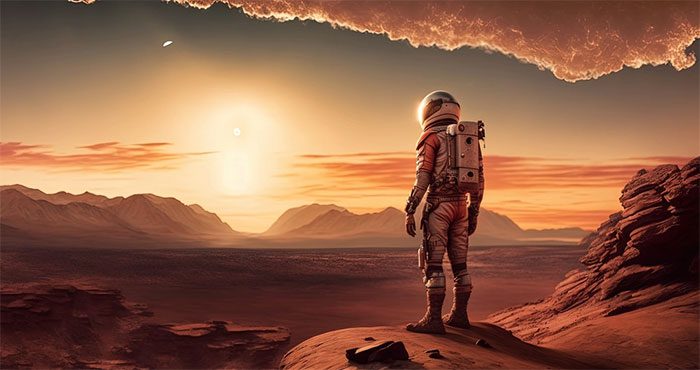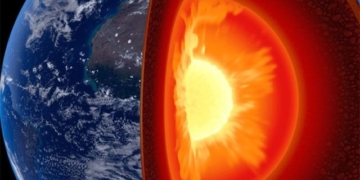In the vast universe, there exists a mysterious connection hidden between Mars and Earth. The connections throughout the universe are filled with wonders and mysteries. The distance of 400 million kilometers is not just a number; it is the thread that connects two worlds.
Basic Characteristics of Mars and Earth
Mars is one of the closest planets to Earth in the Solar System. Compared to Earth, Mars has many differences in size, orbit, and environment. Mars has a diameter that is half that of Earth, making it the fourth largest planet in the Solar System. This size difference directly affects the landscape and topographical features of Mars.
The mountains and valleys on Mars are larger and wider than those on Earth, such as the famous Olympus Mons, which is the largest volcano on Mars and also taller than any volcano on Earth. At the same time, Mars is also further away from the Sun.

Mars is smaller than Earth, has a greater distance from the Sun, and possesses an extremely harsh surface environment. These features make Mars a challenging and mysterious planet, attracting humanity to continue exploring and researching it. (Photo: Zhihu).
The difference in distance results in a variation of seasons and climates on Mars compared to Earth. In contrast to the 365 days on Earth, one year on Mars is about 687 days. The seasons on Mars are also harsher and more erratic than those on Earth.
The atmosphere of Mars is thin, only about 1% of Earth’s atmosphere. This leads to a relatively cold climate on Mars, with an average temperature of about minus 80 degrees Celsius. Most of the water on Mars is frozen.
The environment of Mars is also affected by strong radiation. Since it lacks a magnetic field to protect its atmosphere and surface like Earth, the radiation levels on Mars are relatively high. This type of radiation poses significant challenges for the survival and development of humans as well as other organisms, while also limiting the ability to explore and colonize Mars.
Mars is smaller than Earth, has a greater distance from the Sun, and possesses an extremely harsh surface environment. These features make Mars a challenging and mysterious planet, attracting humanity to continue exploring and researching it. With the continuous development of science and technology, we believe that in the future we will understand and uncover many more mysteries about Mars.

With the continuous development of science and technology, we believe that in the future we will understand and uncover many more mysteries about Mars. (Photo: ZME).
Scientific Objectives of Mars Exploration
Mars is one of the most important planets for humanity, and the question of whether there is life on Mars has always been a crucial inquiry for scientists and space explorers. In the Mars exploration mission, scientists have set many scientific objectives, the two most important being the search for water and microbial fossils.
Water is one of the fundamental elements for sustaining life. Understanding whether water exists on Mars has become one of the core goals of Mars exploration. Scientists have found substantial evidence indicating that water once existed on Mars through data from various probes. These signs include minerals in dust, traces of glaciers, vapor, and much more.

Microbial fossils record the adaptability and survival conditions of life in various environments and are very useful in studying the survival potential and possible forms of life in harsh conditions. By studying microbial fossils on Mars, we can also understand the evolutionary history of Mars’s environment and provide important references for future space exploration. (Photo: ZME).
If the inventory and distribution of water on Mars can be confirmed, it will be extremely significant for humanity’s future exploitation and use of resources on Mars. The presence of water further illustrates the basic conditions for the potential existence of life on Mars.
Meanwhile, microbial fossils are one of the crucial pieces of evidence for studying the evolutionary history of life and the existence of life beyond Earth. Scientists hope to use rock samples collected from the Mars exploration to search for microbial fossils that may be preserved on Mars. Although no microbial fossils have been directly observed on Mars, some data results suggest the possibility of microbial life on Mars.

With the continuous development of science and technology, humanity has made significant strides in space exploration. Now, a new goal is quietly emerging in human vision – Mars. Many scientists believe that Mars, one of the closest planets to Earth, provides an excellent opportunity for humanity to land and conquer space. (Photo: Zhihu)
The pursuit of sending humans to Mars has become a common goal for the global scientific community. Many countries and private companies are actively investing funds and resources to carry out Mars exploration missions. For instance, NASA’s “Mars Probe” project and SpaceX’s “Starship” plan are both striving to realize the dream of humans setting foot on Mars for the first time. Such collaboration not only drives advancements in science and technology but also brings deeper understanding of the space environment and the universe.
If humanity can successfully establish a residential base on Mars, it will lay the groundwork for future space exploration and resource development. Furthermore, scientific research and resource development on Mars will also help address some issues on Earth, such as resource scarcity and environmental pollution, thereby promoting sustainable development on Earth.


















































